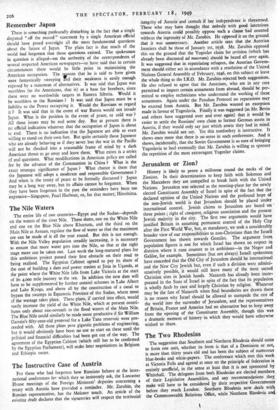The Nile Waters
The entire life of two countries—Egypt and the Sudan—depends on the waters of the river Nile. Three dams, one on the White Nile and one on the Blue Nile above Khartum, and the third on the Main Nile at Assuan, regulate the flow of water so that the maximum use can be made of it all the year round. But this is not enough. With the Nile Valley population steadily increasing, it is necessary to ensure that more water gets into the Nile, so that at the right stage more can be taken out. Last week the long-matured plans for this ambitious project passed their first obstacle on their road to being realised. The Egyptian Cabinet agreed to pay its share of the cost of building a dam and power station at Jinja in Uganda, at the point where the White Nile falls from Lake Victoria at the start of its 4,000 mile journey to the sea. In addition the new dam will have to be supplemented by further control schemes in Lake Albert and Lake Kyoga, and above all by the construction of a canal to bypass the swamps in Equatoria Province of the Sudan, where most of the wastage takes place.. These plans, if carried into effect, would vastly increase the yield of the White Nile, which at present contri- butes only about one-seventh to the flood waters of the Main Nile. The Blue Nile could similarly be made more productive if Sir William Garstin's fifty-year-old proposal for a Lake Tana reservoir were pro- ceeded with. All these plans pose gigantic problems of engineering, but it would obviously have been no use to start on these until the political and financial difficulties had been got out of the way. The agreement of the Egyptian Cabinet (which still has to be confirmed by the Egyptian Parliament), will make later negotiations in Belgium and Ethiopia easier.






































 Previous page
Previous page